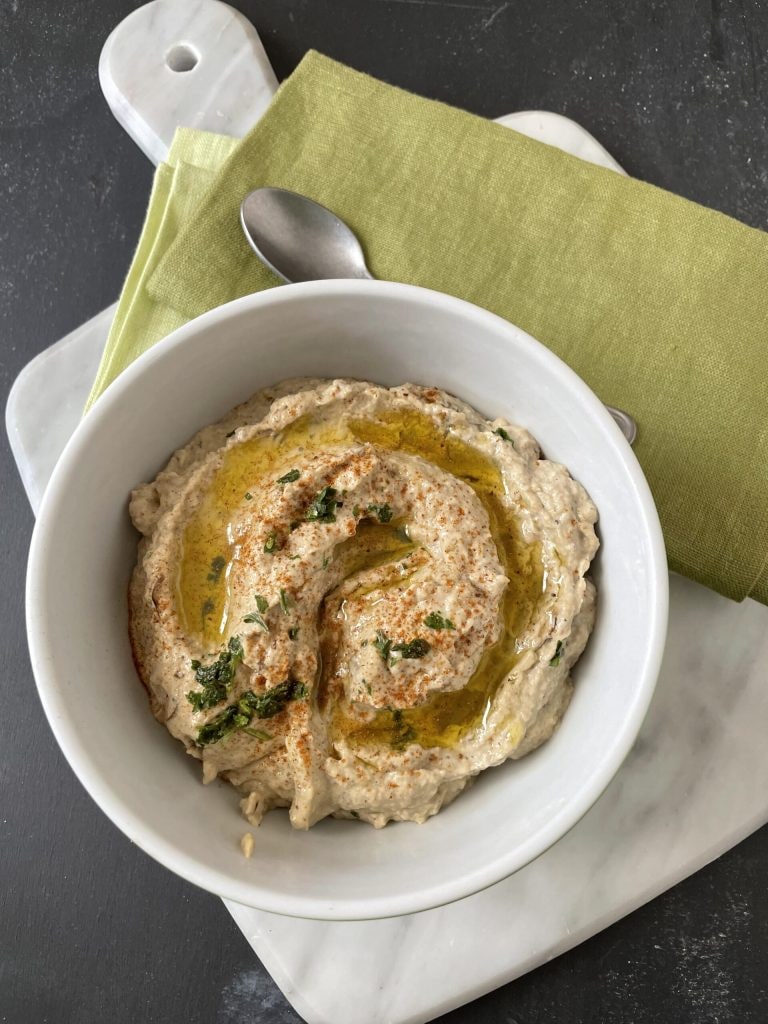
- Difficulty: Easy
- Cost: Inexpensive
- Preparation time: 10 Minutes
- Portions: 6 servings
- Cooking methods: Oven
- Cuisine: Middle Eastern
- Energy 87.89 (Kcal)
- Carbohydrates 6.11 (g) of which sugars 2.81 (g)
- Proteins 1.89 (g)
- Fat 7.00 (g) of which saturated 1.00 (g)of which unsaturated 2.81 (g)
- Fibers 2.96 (g)
- Sodium 57.69 (mg)
Indicative values for a portion of 100 g processed in an automated way starting from the nutritional information available on the CREA* and FoodData Central** databases. It is not food and / or nutritional advice.
* CREATES Food and Nutrition Research Center: https://www.crea.gov.it/alimenti-e-nutrizione https://www.alimentinutrizione.it ** U.S. Department of Agriculture, Agricultural Research Service. FoodData Central, 2019. https://fdc.nal.usda.gov
Variants of Babaganoush
As mentioned earlier, this sauce is widespread in many parts of the world, each giving it unique characteristics. Let’s see the main variants:
Egyptian: only eggplants are used.
Syrian and Lebanese: finely chopped onions and tomatoes are added.
Maghreb version: the eggplant is cut into pieces and then steamed. It is then fried, mashed, and two cloves of garlic, a pinch of sweet paprika, and black pepper are added.
Pakistani: yogurt is used instead of tahini.
Israeli: mayonnaise is used instead of tahini.

